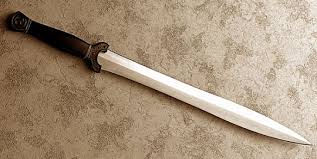Introduction In the world of Dungeons & Dragons (D&D), the choice of weapon can significantly shape a player’s experience. Among the arsenal available to adventurers, the short sword stands out as a versatile and favored option. Lightweight and agile, it is ideal for rogues, wizards, and any character needing a reliable blade without the encumbrance of a larger weapon.
Overview The short sword in D&D is classified as a light melee weapon, making it suitable for use in one hand. Typically, it deals 1d6 piercing damage and has a standard critical hit range of 19–20/x2. This makes it less powerful than a longsword but its agility allows for swift, effective strikes.
Advantages The primary advantage of the short sword is its light weight, allowing it to be used in dual-wielding combat styles or as a secondary weapon. Characters can wield a short sword in one hand and use the other hand for casting spells, holding a shield, or managing another weapon. This flexibility is particularly useful in close quarters or when agility and speed are crucial.
Tactical Uses In combat, the short sword excels in the hands of those who capitalize on stealth and speed. Rogues, for example, find it invaluable for executing sneak attacks where precision and timing are more critical than brute force. Additionally, its size makes it an excellent choice for fighting in environments where larger weapons would be cumbersome, such as dense forests or narrow dungeon corridors.
Conclusion The short sword is a fundamental weapon in D&D that offers a balance of speed, discretion, and damage. Its design caters to adventurers who value finesse over raw power, providing a practical and strategic edge in diverse combat scenarios. Whether used as a primary weapon or a backup, the short sword remains a reliable companion in the ever-unpredictable realm of Dungeons & Dragons.

Leave a Reply